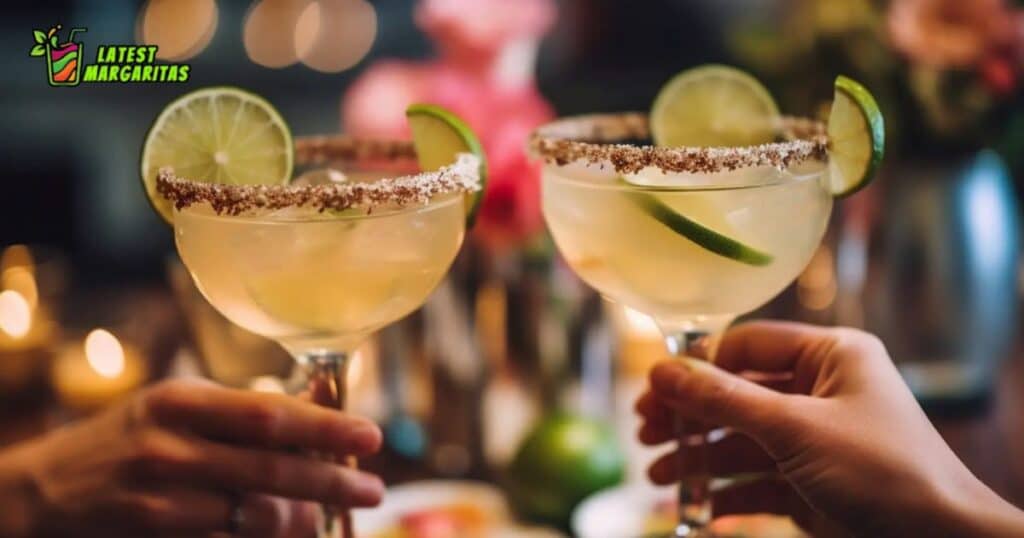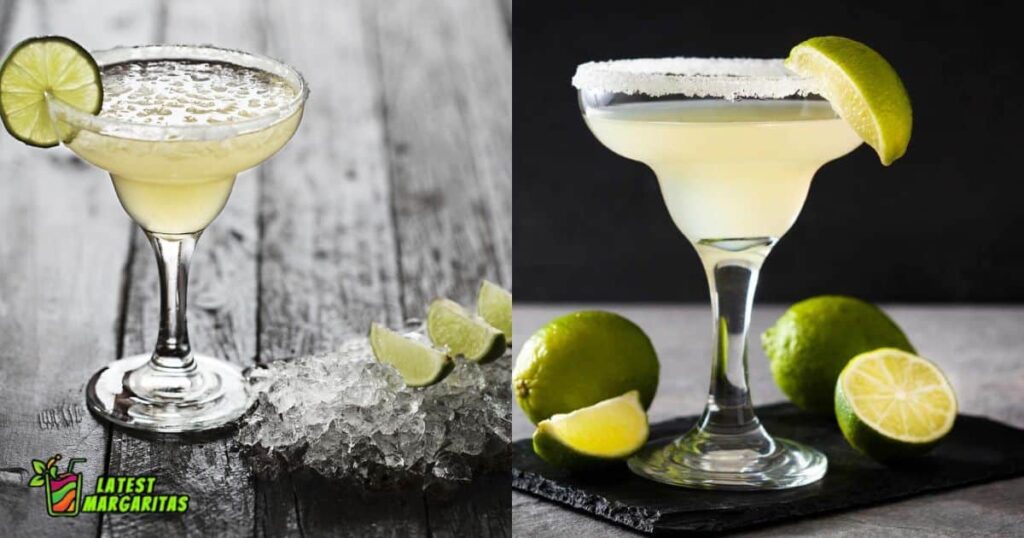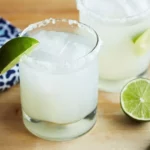Let’s dive into the delightful world of cocktails and explore the charming differences between the Martini and Margarita. These iconic drinks have carved their own niches in the realm of mixology, each offering a distinct taste and experience. While one exudes sophisticati on with its gin or vodka base, the other bursts with refreshing tanginess from tequila and lime juice.
Embark on a journey of flavor as we unravel the nuances that set the Martini and Margarita apart. From the elegant simplicity of a perfectly stirred Martini to the vibrant fiesta of a salt-rimmed Margarita, each sip tells a tale of craftsmanship and tradition. Join us as we uncover the unique characteristics that make these beloved cocktails staples in bars and gatherings worldwide.
What is a Martini?
A Martini is a classic cocktail renowned for its timeless elegance and simplicity.
It typically consists of two primary ingredients: gin and vermouth, although vodka can be substituted for gin to create a vodka Martini. The precise ratio of gin to vermouth varies according to personal preference, ranging from a very dry Martini with minimal vermouth to a wet Martini with a higher proportion of vermouth.
What is a Margarita?
The Margarita is a beloved Mexican cocktail known for its vibrant and refreshing taste.
Its essential components include tequila, lime juice, and triple sec, which is an orange-flavored liqueur. The cocktail can be served on the rocks, blended with ice, or straight up, with the rim of the glass often garnished with salt for an added savory dimension.
Origin and History
The origins of the Martini are somewhat shrouded in mystery, with various stories claiming its creation. It is believed to have evolved in the late 19th century, possibly stemming from a cocktail called the Martinez, which was popular during the California Gold Rush. Over time, the Martini has become synonymous with sophistication and class, immortalized in literature and film.
The Margarita history is believed to have begun in the mid-20th century, with multiple origin stories attributing its creation to Mexico or Mexican-Americans.
It rapidly gained popularity, particularly in the United States, and became associated with festive occasions and leisure.
Primary Ingredients

The primary ingredients of a Martini are gin and vermouth. Gin provides the base spirit, contributing its distinctive botanical flavors, while vermouth adds complexity and subtle sweetness to the drink.
In contrast, the primary components of a Margarita are tequila, lime juice, and triple sec. Tequila serves as the backbone of the cocktail, imparting its bold and robust flavor, while the lime juice provides tartness and acidity. Triple sec adds a hint of orange flavor and sweetness to balance the drink.
Preparation and Serving Style
The preparation of a Martini typically involves stirring or shaking the gin and vermouth with ice before straining it into a stemmed cocktail glass. The drink is often garnished with an olive or a lemon twist for a touch of aroma and flavor.
On the other hand, Margaritas can be prepared by shaking the tequila, lime juice, and triple sec with ice or blending them together. The cocktail is then poured into a glass, often with a salted rim for added flavor, and garnished with a lime wedge.
Taste Profile
In the realm of cocktails, the Martini and Margarita stand as iconic symbols of mixology. A Martini is characterized by its dry and aromatic profile, with the flavor of the gin taking center stage, while the vermouth adds depth and complexity. The garnish enhances the drink’s aroma, creating a sophisticated drinking experience.
Conversely, a Margarita offers a sweet and tangy experience, with the tartness of the lime juice balancing the sweetness of the triple sec. The addition of salt on the rim adds a savory note that complements the drink’s citrusy flavors, making it a refreshing and vibrant choice.
Also Read This Blog: How To Make The Best Margarita?
What’s the difference between a martini glass and a margarita glass?

A Martini glass features a long stem with a wide, cone-shaped bowl, ideal for enhancing the drink’s aroma. In contrast, a Margarita glass boasts a broad-rimmed bowl atop a stem, designed for holding salt or sugar, accommodating the cocktail’s larger volume and festive presentation.
Martini Glass:
A Martini glass is characterized by its long stem and wide, cone-shaped bowl that tapers to a point at the bottom. This iconic design is instantly recognizable and serves a specific purpose in enhancing the Martini drinking experience. The wide bowl allows for the surface area of the Martini to be exposed, maximizing the drink’s aroma and flavor. Additionally, the stem prevents the hand from warming the drink, keeping it at an optimal temperature. Martini glasses typically hold between 5 to 10 ounces of liquid and are designed for serving Martinis without ice.
Traditional martini glasses
Step back in time with our traditional martini glasses. These timeless pieces evoke the classic charm of cocktail culture, reminiscent of a bygone era. Crafted with attention to detail and authenticity, they capture the essence of traditional martini enjoyment.
Transport yourself to a vintage cocktail lounge with our traditional martini glasses. With their iconic design and nostalgic appeal, they bring a sense of elegance and sophistication to any occasion. Whether you’re hosting a retro-themed party or simply enjoying a quiet evening at home, our traditional martini glasses add a touch of old-world charm to your drinking experience.
Read This Blog: Winter Margarita
Margarita Glass:
In contrast, a Margarita glass features a broad-rimmed bowl atop a stem, reminiscent of a sombrero. The bowl of the glass is often more bulbous, wider, and more rounded compared to a Martini glass. The wide rim of the Margarita glass is specifically designed for holding salt or sugar, which complements the flavor of both Martini And Margarita.
Similar to the Martini glass, the stem helps keep the drink cold by preventing the hand from warming the bowl. Margarita glasses can vary significantly in size, typically holding anywhere from 8 to 20 ounces of liquid, accommodating the larger volume of a Margarita cocktail, which may include ice or be served blended.
Nutrients Facts: Martini vs. Margarita

When comparing the nutritional content of a Martini and a Margarita, there are some notable differences:
- Calories: A Martini typically contains fewer calories compared to a Margarita. While the exact calorie count can vary based on ingredients and serving size, a Margarita often contains more due to the additional sugars and fruit juices.
- Alcohol Content: Both cocktails contain alcohol, but the exact amount may vary depending on the recipe and proportions used. Generally, Margaritas tend to have slightly higher alcohol content compared to Martinis.
- Carbohydrates and Sugars: Margaritas typically contain more carbohydrates and sugars than Martinis, primarily due to the addition of fruit juices and sweet liqueurs like triple sec.
- Sodium: Margaritas may also contain more sodium, especially if they are served with a salted rim, which is a common garnish for this cocktail.
Similarities Between Martini and Margarita
Despite their differences, both the Martini and Margarita share several similarities:
- Simplicity of Ingredients: Both cocktails are made with relatively few ingredients, typically including a base spirit, a flavoring agent (such as vermouth or lime juice), and sometimes a sweetener or modifier (like triple sec).
- Customizability: Both cocktails offer room for variation and personalization. Martinis can be made with gin or vodka, shaken or stirred, and garnished with various options. Margaritas can be flavored with different fruits, served on the rocks or blended, and with a salted or unsalted rim.
- Social Drinks: Both the Martini and Margarita are popular choices in social settings and are often associated with a sense of celebration, sophistication, or relaxation.
- Strong Flavor Profiles: While their flavors are distinct, both cocktails are known for having strong, prominent flavor profiles that are immediately recognizable. Whether it’s the aromatic gin and vermouth in a Martini or the tangy lime and tequila in a Margarita, these cocktails leave a lasting impression on the palate.
When to Choose a Martini or Margarita?
If you’re aiming for a formal or sophisticated event, a Martini fits the bill with its classic elegance. Conversely, Margaritas are perfect for casual or festive occasions, adding a lively touch to gatherings, especially in warm weather or outdoor settings.
Garnish different Martini vs Margarita
Martini garnishes typically include olives or lemon twists, enhancing its aromatic profile. Margaritas, on the other hand, often feature a lime wedge or are served with a salted rim, adding a savory note to complement the drink’s tangy sweetness.
Read This Blog: TEQUILA AND COKE
Luxury martini and margarita glasses

Indulge in sophistication with our luxury martini and margarita glasses. Crafted with precision and elegance, these glasses elevate your drinking experience to new heights. With their sleek design and impeccable craftsmanship, they are the perfect complement to any upscale event or intimate gathering.
Experience the ultimate in luxury with our martini and margarita glasses. Each glass is meticulously designed to enhance the aroma and flavor of your favorite cocktails. Whether you’re enjoying a classic martini or a refreshing margarita, our glasses add a touch of glamour to every sip. Treat yourself to the finer things in life and elevate your cocktail game with our luxury glassware.
Conclusion
Both the Martini and Margarita hold their place as iconic cocktails, offering unique experiences to cocktail enthusiasts. Whether you prefer the dry sophistication of a Martini or the vibrant refreshment of a Margarita, these timeless classics continue to captivate and delight.
FAQ’s
What makes the taste of a Martini different from a Margarita?
Martini’s flavor is dry and aromatic, primarily influenced by gin and vermouth, while Margarita offers a sweet and tangy experience with tequila and lime juice.
Can both Martinis and Margaritas be customized?
Both cocktails offer room for personalization, allowing variations in ingredients, flavors, and serving styles.
What is the traditional method of mixing a Martini?
Traditionally, a Martini is either stirred or shaken with ice and then strained into a glass.
Are there non-alcoholic versions of Martinis and Margaritas?
Yes, mocktail versions of both exist, offering the flavors of the original cocktails without alcohol.





